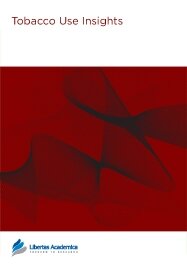

Publication Date: 23 Mar 2009
Journal: Tobacco Use Insights
Citation: Tobacco Use Insights 2009:2 1-10

Salameh Pascale1, Aoun Bacha Zeina2 and Waked Mirna3
1Pharmacist and Epidemiologist, Lebanese University, Beirut, Lebanon. 2Chest physician, HOTEL DIEU hospital, Beirut, Lebanon. 3Chest physician, St. George Hospital, Beirut, Lebanon.
Abstract
Introduction: We have already suggested that waterpipe (WP) smoking is associated with an increase in saliva cotinine and carbon monoxide in a small number of smokers.
Objective: The primary objective of this study was to confirm the increase in exhaled carbon monoxide (CO) and saliva cotinine equivalents levels in waterpipe smokers in a real smoking environment, compared with cigarettes smokers and never smokers. The secondary objective was to assess the factors associated with WP dependence according to the Lebanese Waterpipe Dependence Scale —11 (LWDS-11).
Methods: Three groups were included in the study: never smokers (n = 43), waterpipe smokers (n = 103), and cigarette smokers (n = 42). A questionnaire was completed for each participant, exhaled CO measured before and after waterpipe or cigarette smoking, and saliva cotinine equivalents dosed one hour after WP smoking or after one cigarette.
Results: Waterpipe smokers, like cigarette smokers, are exposed to nicotine and to CO. We found that levels of saliva cotinine equivalents were lower in waterpipe compared with cigarette smokers, but significantly higher than never smokers. In waterpipe smokers, saliva cotinine equivalents was mainly affected by the number of waterpipes per week and the size of the waterpipe. High levels were again found for expired CO, which increased by 500% in waterpipe smokers, in com- parison with 100% in cigarette smokers; in waterpipe smokers, the relative increase in CO was affected by the number of waterpipes smoked before measurements, while it was inversely associated to the number of persons with whom they were sharing the WP and to the WP size. WP dependence was significantly correlated with the number of smokers at home, at work, and the body mass index.
Conclusion: This is a confirmation of real life waterpipe tobacco smoking characteristics in Lebanon. It indicates that nicotine is only marginally retained in the bowl water where smoke passes, and that waterpipe smokers could be exposed to harmful substances, such as CO that was found to be quite high. The level of expired CO and salivary cotinine could be good tools to detect exposure to waterpipe tobacco smoking. In addition, obesity and surrounding smokers could increase the risk of WP dependence.
PDF (257.11 KB PDF FORMAT)
RIS citation (ENDNOTE, REFERENCE MANAGER, PROCITE, REFWORKS)
BibTex citation (BIBDESK, LATEX)


I was delighted with the speed and efficiency with which my paper was processed. The friendly and personal communications with editorial staff also made the experience extremely pleasant and easy. I should be happy to recommend International Journal of Tryptophan Research to anyone.
Facebook Google+ Twitter
Pinterest Tumblr YouTube